Raised Bed Vegetable Gardening: A Beginner’s Guide
- January 15, 2024
- 0 comment
Explore the world of raised bed vegetable gardening with this beginner-friendly guide. Whether you’re new to gardening or just trying something different, this guide simplifies the essentials of raised bed gardening.
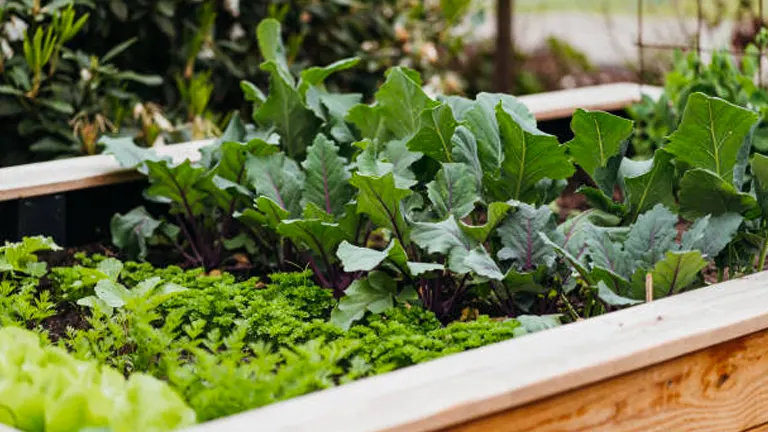
Learn how to optimize your space, maintain healthy soil, and choose veggies that thrive together. With straightforward steps and useful tips, you’ll soon be savoring the fruits of your gardening efforts. Get ready with your gardening tools, and let’s make those beds flourish with tasty goodness!
Table of Contents
- What is Raised Bed Vegetable Gardening?
- Choosing the Right Size
- How to Build a Raised Bed Vegetable Garden
- Selecting and Siting a Raised Bed
- Preparing Raised Bed Soil
- Determining the Number of Beds
- Planting in Raised Beds
- Advantages of Raised Bed Gardening
- Disadvantages of Raised Bed Gardening
- Conclusion
- FAQs
What is Raised Bed Vegetable Gardening?
Raised bed vegetable gardening is a method of cultivating plants in elevated soil beds, typically constructed with materials like wood or concrete. These beds are filled with a specialized mix of high-quality potting soil, compost, and organic matter, creating an optimal environment for plant growth with improved drainage and nutrient richness. The elevated structure not only allows for better control over soil conditions, making it suitable for challenging soil types, but also provides an extended growing season as the soil warms up faster in spring. Raised beds offer enhanced accessibility, minimizing soil compaction and reducing maintenance efforts.
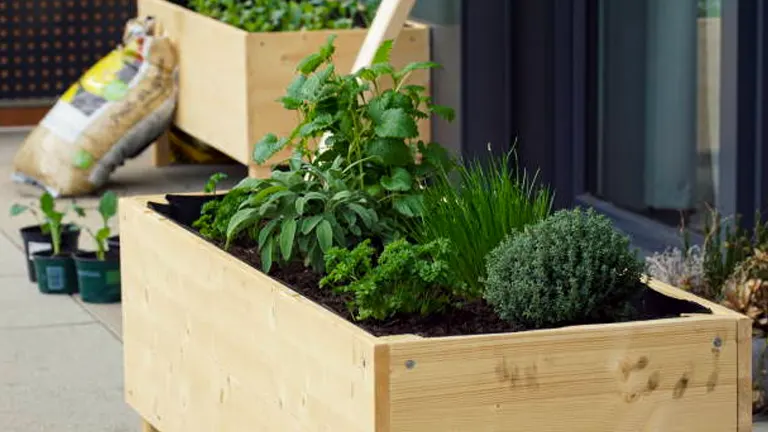
Their versatility shines in their adaptability to various locations, from balconies to decks or concrete surfaces. With the flexibility to customize size, shape, and height, raised bed vegetable gardening proves efficient, promoting intensive planting and maximizing yields in a compact space. Overall, it has become a popular choice for both novice and experienced gardeners seeking a controlled and productive gardening environment.
Choosing the Right Size

For a home vegetable garden that’s easy to manage, consider opting for narrow beds, around four feet wide. This width makes it simple to reach the middle of the bed without digging too much or compacting the soil. The beauty of these beds is that they’re not only practical for gardeners with limited mobility but can also be set up on raised platforms, ensuring ease of use for everyone. So, keeping it around four feet wide strikes a good balance for a hassle-free and inclusive gardening experience.
How to Build a Raised Bed Vegetable Garden
Materials and Tools:
- 8 pieces of lumber, each 8 feet long (for the sides)
- 8 pieces of lumber, each 4 feet long (for the ends)
- Screws or nails
- Power drill or hammer
- Saw (if adjustments to the lumber length are necessary)
- Weed barrier fabric (optional)
- Level
- Work gloves
Steps:
- Select a Location: Choose a sunny location with at least 6-8 hours of sunlight per day. Ensure the ground is level.
- Gather Materials: Purchase or gather the necessary materials, making sure the lumber is untreated if you plan to grow edibles. Cedar or redwood are popular choices for their durability.
- Cut Lumber to Size (if necessary): If the lumber is not already cut to the required lengths, use a saw to cut 8 pieces to 8 feet (for the sides) and 8 pieces to 4 feet (for the ends).
- Assemble the Frame: Lay out the lumber in the shape of a rectangle, with the 8-foot pieces as the sides and the 4-foot pieces as the ends. Use a level to ensure the frame is even. Attach the corners using screws or nails. If using screws, pre-drill holes to prevent the wood from splitting.
- Optional: Add Support (Bracing): For longer beds, consider adding support in the middle to prevent bowing or bending. This can be done with additional stakes or braces along the length of the bed.
- Prepare the Site: Clear the area of grass, weeds, or debris where the raised bed will be placed. If desired, lay down weed barrier fabric to suppress weed growth.
- Place the Frame: Position the assembled frame in the desired location. Ensure it is level and square before proceeding.
- Fill with Soil: Fill the bed with a mixture of high-quality potting soil, compost, and/or leaf mold. This ensures good drainage, fertility, and aeration for your plants.
- Watering System (Optional): Consider installing a soaker hose or drip irrigation system to provide consistent and efficient watering.
- Mulch (Optional): Apply a layer of mulch on top of the soil to help retain moisture, suppress weeds, and regulate soil temperature.
- Planting: Plan your vegetable layout based on sunlight and spacing requirements. Plant according to your gardening preferences and the season.
- Maintenance: Regularly check for weeds, pests, and diseases. Top up the soil with compost as needed. Consider rotating crops each season to maintain soil health.
By following these steps, you can create a functional and productive 4×8 raised bed vegetable garden. Adjustments can be made based on your specific preferences and needs.
Selecting and Siting a Raised Bed
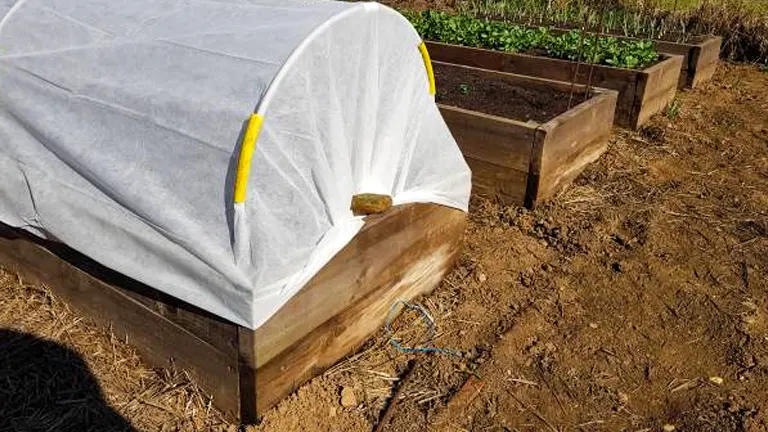
When selecting the perfect location for your raised bed garden, a few key considerations can make a significant difference in the success of your plants. Begin by choosing a spot that receives abundant sunlight throughout the day, as most vegetables and herbs thrive in full sunlight. Ensure the selected area gets at least six to eight hours of direct sunlight to support robust growth. Additionally, prioritize well-drained locations to prevent waterlogging issues that could harm your plants. Raised beds already offer improved drainage, but it’s crucial to start with a site that doesn’t retain excess moisture. If the chosen spot tends to stay wet, consider elevating the bed or implementing drainage solutions. Lastly, think about the convenience of watering by placing your raised bed near a water source. This ensures easy access for regular watering, whether you use a hose, watering can, or a drip irrigation system, providing your plants with the essential moisture they need, especially during dry periods. Taking these factors into account sets the groundwork for a thriving raised bed garden, promoting healthy plant growth and a fruitful harvest.
Preparing Raised Bed Soil
Ensuring optimal soil quality is crucial for the success of your raised bed garden, and a recommended mix involves combining 50-60% topsoil with 40-50% compost. This straightforward yet effective blend provides a nutrient-rich foundation, promoting healthy plant growth. The depth of your raised bed is equally important and varies based on the crops you plan to cultivate. For leafy greens like lettuce and herbs, a depth of at least 6 inches suffices, while deep-rooted crops like tomatoes or carrots thrive in beds 12-18 inches deep. If you’re setting up your raised bed on grass or bare earth, consider enhancing the soil depth by digging 6-12 inches into the ground, removing rocks and debris, and mixing in your raised bed soil.
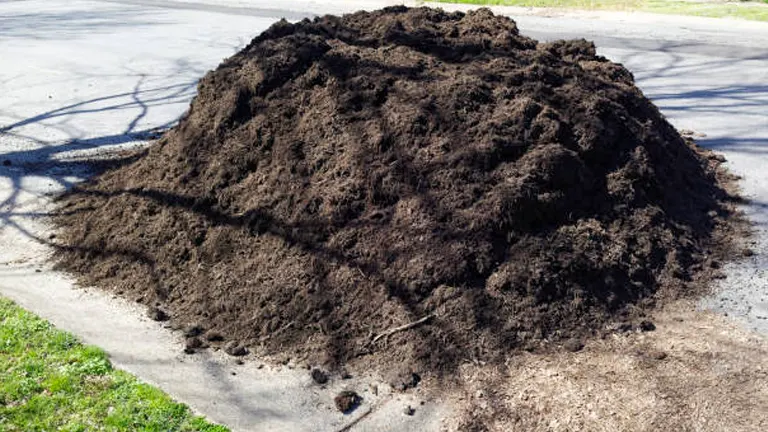
For an extra boost in soil health and moisture retention, incorporating organic matter such as leaf mold into your garden bed is a wise move. This addition contributes to the overall well-being of your soil and benefits the plants in your raised bed. Additionally, for specialty crops with unique nutrient preferences, like blueberries favoring acidic soil, consider adding specific soil amendments to cater to their needs. By paying attention to these soil considerations, you’re creating a nutrient-rich and supportive environment in your raised bed, ensuring a solid foundation for a successful and thriving garden.
Determining the Number of Beds
Deciding on the number of raised beds for your garden is a practical consideration influenced by your available space and gardening objectives. Begin by assessing the space you have, taking into account factors like sunlight exposure and square footage. Whether you choose one bed or opt for multiple, tools like the Kitchen Garden Planner can be invaluable in organizing your crops efficiently. Your gardening goals also play a crucial role in the decision-making process. If you’re a beginner, starting with one bed allows for a gradual introduction to gardening.
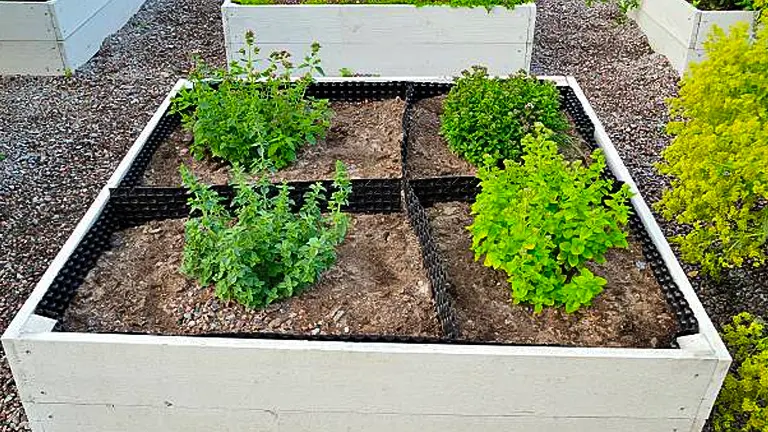
Conversely, if you aspire to cultivate a diverse range of vegetables and herbs, multiple beds provide flexibility for experimentation. These tools help visualize layouts, plan companion planting, and ensure each bed is utilized efficiently, contributing to healthier plants. Raised bed gardening’s adaptability allows you to tailor your garden based on your time commitment, maintenance capabilities, and overall vision, making the process both efficient and personalized.
Planting in Raised Beds
Choosing raised beds for your garden offers an efficient and versatile solution for planting. These beds are designed to maximize gardening space through intensive planting, where plants are strategically placed close together to optimize the available area and suppress weeds. Whether you prefer starting from seeds or transplanting seedlings, raised beds accommodate both methods, providing flexibility and efficiency in your gardening practices.
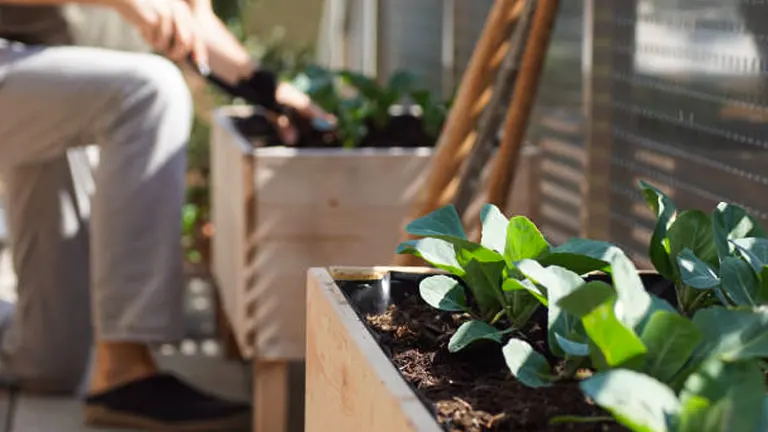
The controlled environment of raised beds allows for easy management of soil quality, moisture levels, and plant spacing, adapting to your preferences and needs. Additionally, the raised structure enhances soil aeration, preventing compaction and promoting healthier root development. Overall, raised beds offer a user-friendly and accessible platform for planting, ensuring that your gardening experience is both efficient and enjoyable.
Advantages of Raised Bed Gardening
There are several reasons why raised bed gardening has become a popular choice among enthusiasts:
- Improved Soil Quality: Raised beds allow you to control and optimize the soil composition. You can mix in high-quality potting soil, compost, and other amendments, creating an ideal growing environment for plants.
- Better Drainage: Raised beds provide excellent drainage, preventing waterlogging and allowing excess water to flow away more efficiently. This is especially beneficial in areas with heavy or poorly-draining soils.
- Warmer Soil: The soil in raised beds tends to warm up faster in the spring, promoting earlier planting and extending the growing season. This is advantageous for crops that require warmer temperatures.
- Reduced Compaction: Since gardeners don’t need to step into raised beds for planting or maintenance, the soil remains loose and friable. This reduces soil compaction, promoting healthier root growth and improved aeration.
- Ease of Access: Raised beds are elevated, making them more accessible for planting, weeding, and harvesting. This is particularly beneficial for individuals with limited mobility, as it minimizes the need for bending and stooping.
- Space Efficiency: Raised beds maximize growing space by utilizing vertical space efficiently. Intensive planting and vertical gardening techniques can lead to higher yields in a smaller area compared to traditional in-ground gardens.
- Weed Control: The controlled environment of raised beds makes it easier to manage and control weeds. The raised structure helps prevent weed encroachment from surrounding areas.
- Pest Management: Raised beds make it easier to implement physical barriers or pest deterrents, such as row covers or netting. This can help protect plants from common garden pests.
- Customizable Design: Gardeners have the flexibility to design raised beds to suit their preferences and available space. They can choose the dimensions, materials, and styles that fit their gardening needs and aesthetic preferences.
- Optimized Planting Conditions: Different crops have specific soil and spacing requirements. Raised beds allow you to customize the planting conditions for each type of plant, providing an environment conducive to optimal growth.
- Aesthetic Appeal: Raised beds can enhance the visual appeal of a garden. Neatly constructed and well-maintained raised beds create an organized and attractive gardening space.
Disadvantages of Raised Bed Gardening
- Cost of Construction: Building raised beds may involve an initial investment in materials, such as lumber or blocks. The cost can be higher compared to traditional in-ground gardening.
- Space Limitations: Raised beds, especially if tall, can occupy a significant amount of space in a garden. This might limit the overall planting area, especially in smaller yards.
- Soil Drying Out: Raised beds, while generally retaining moisture well, may dry out more quickly than in-ground gardens during hot and dry weather. This can lead to the need for more frequent watering.
- Heating Up Quickly: The soil in raised beds can heat up more quickly than the ground soil in warmer climates. This may impact certain plants negatively, especially those that prefer cooler temperatures.
- Limited Root Depth: Some deep-rooted crops, such as carrots or certain varieties of tomatoes, may face constraints in raised beds with limited depth. This can impact their growth and overall yield.
- Maintenance Challenges: Over time, raised beds may require maintenance, such as replacing or repairing the frame materials. This ongoing upkeep can be a consideration for those seeking low-maintenance gardening.
- Risk of Overcrowding: Due to the confined space in raised beds, there’s a risk of overcrowding plants, especially if not planned well. Overcrowding can lead to increased competition for nutrients, sunlight, and space, resulting in stunted growth.
- Potential for Overwatering: In regions with heavy rainfall or if the gardener tends to overwater, raised beds may drain less effectively, leading to waterlogged soil and potential root rot issues.
Related Post
- How to Build a Barn: A Step-by-Step Guide for Beginners
- How to Build a Sustainable Compost Bin: Easy and Eco-Friendly DIY
- How to Fertilize Bougainvillea: A Complete Guide for Stunning Blooms
- How to Fertilize Apple Trees: Essential Tips for a Bountiful Harvest
- How to Fertilize Lemon Trees: Secrets for Thriving Citrus
- How to Fertilize Avocado Tree: A Step-by-Step Guide for Lush Growth
- 10 Best Bow Saws to Buy in 2024: Top Picks for the Money
- Best Miter Saw For Beginners
- Top 10 Pruning Saws to Buy in 2024: Best for the Money
- 7 Best Pocket Chainsaw
Conclusion
This beginner’s guide serves as your compass, navigating through the essentials, offering insights into the benefits of raised beds, and providing the know-how for successful soil preparation and planting. Now equipped with these fundamentals, you stand ready to embark on a fulfilling and bountiful gardening odyssey. So, seize your gardening tools with enthusiasm, as this guide marks the commencement of a vibrant and rewarding chapter in your gardening story.
FAQs
- Can I use recycled materials to build my raised bed, or do I need to buy new ones?
Absolutely! You can use recycled materials like old pallets or reclaimed wood to build your raised bed. Just ensure the materials are safe and untreated to avoid any potential harm to your plants. - I live in an apartment. Can I still have a raised bed garden?
Yes, you can! Raised beds are versatile and can be adapted for apartment living. Consider smaller containers or vertical gardening solutions, like hanging pockets or balcony railing planters. - Are there vegetables that don’t do well in raised beds?
Most vegetables thrive in raised beds, but some deep-rooted crops like potatoes or large plants like corn may face space constraints. Research the specific needs of each vegetable and plan accordingly. - How do I prevent my raised bed soil from becoming too compacted over time?
To prevent soil compaction, avoid stepping directly on the bed. Incorporate organic matter like compost regularly, which enhances soil structure, aeration, and helps maintain a healthy balance. - Can I grow herbs and flowers in the same raised bed as vegetables?
Absolutely! Herbs and flowers can be great companions for vegetables. Some, like marigolds, even help deter pests. Just be mindful of each plant’s specific needs for sunlight and water. - Do raised beds need a lot of sunlight, or can they thrive in partial shade?
While most vegetables prefer full sunlight, some, like leafy greens, can thrive in partial shade. Ensure your raised bed gets at least 4-6 hours of sunlight a day for optimal plant growth. - Is it necessary to rotate crops in a raised bed garden, and how do I do it?
Crop rotation helps prevent soil-borne diseases and nutrient depletion. Ideally, rotate families of crops every season. For example, if tomatoes were in one spot last year, plant them in a different location this year. - Can I use rainwater to water my raised bed, or is tap water better?
Rainwater is an excellent choice! It’s natural, free, and lacks the chemicals found in tap water. If rainwater is scarce, tap water is fine, but let it sit for a day to allow chlorine to dissipate, promoting healthier soil biology.
Begin your journey with raised bed gardening today and enjoy fresh vegetables from your own backyard. Happy planting!

Benjamin Brooks
Forestry AuthorGreetings! I'm Benjamin Brooks, and my journey over the past 15 years has revolved around the fascinating realms of content creation, expertise in snow clearing, and the intricate world of lumberjacking and landscaping. What began as a simple curiosity about the natural world and heavy machinery has evolved into a passionate profession where my love for crafting words intertwines seamlessly with my lumberjacking and garden skills.




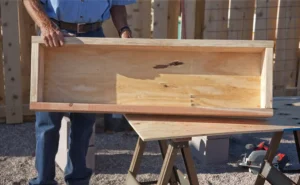







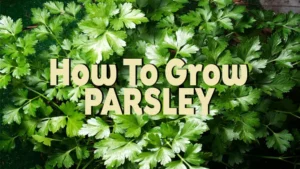
Leave your comment